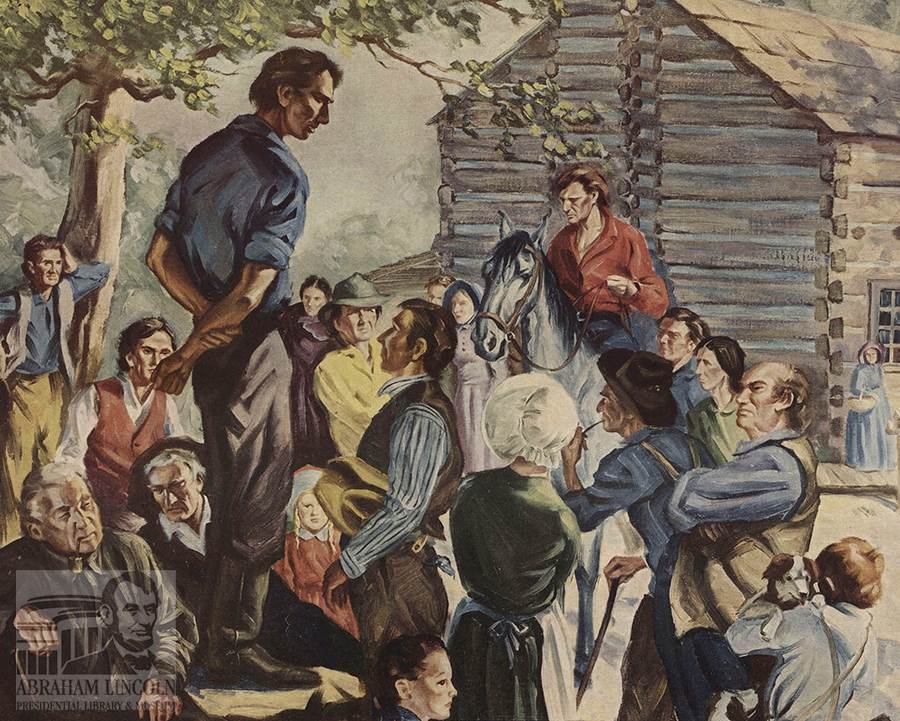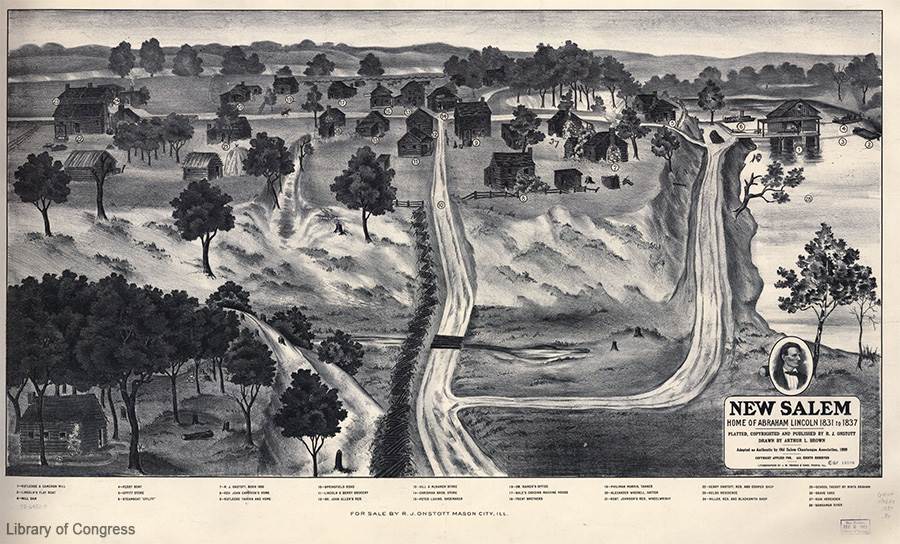By Dr. Christian McWhirter
Abraham Lincoln first ran for office in 1832 — an audacious move for someone in their early 20s. What’s more, Lincoln had been a resident of New Salem for only about a year before putting himself forward as the man to represent it in the Illinois House of Representatives. This partly reflects the frontier character of Illinois, where the new power structure was loose enough for an upstart like Lincoln to have a chance at breaking through. It mostly, however, reflects Lincoln’s emerging political ambition and identity.
There are signs Lincoln may have supported Andrew Jackson early in life but, by 1832, was hitching his wagon to then-presidential candidate Henry Clay and the emerging Whig Party. America’s second two-party system was just forming that year, as Clay and others coalesced around a political movement to check what they saw as Jackson’s tyrannical, populist rule. The election drew battle lines for what would become Jackson’s Democrats and Clay’s Whigs.
 An artist's conception of the new candidate talking to the people of New Salem (ALPLM)
An artist's conception of the new candidate talking to the people of New Salem (ALPLM)
Central to Clay’s platform was his “American System,” which advocated for government investments in infrastructure, trade, and manufacturing. This would help grow the capitalist economy and spread it throughout the east coast and Mississippi frontier. Lincoln’s support for Clay’s program is evident in the only major surviving political document from his first campaign: this “Communication to the People of Sangamon County” that appeared in the March 15, 1832, edition of the Sangamo Journal.
It only takes Lincoln one paragraph before he expresses his support for “internal improvements”: a cornerstone of the American System. For a new candidate, he writes with firm certainty on the utility of his (and Clay’s) plan: “That the poorest and most thinly populated countries would be greatly benefitted by the opening of good roads, and in the clearing of navigable streams within their limits, is what no person will deny.”
Lincoln goes on to promote river transport as more advantageous to New Salem than a railroad — in part because New Salem then lay along the Sangamon River, in part because it would have been cheaper, and perhaps in part because of Lincoln’s own two experiences transporting goods down the Mississippi to New Orleans.
 A map of the tiny, and short-lived, village of New Salem (Library of Congress)
A map of the tiny, and short-lived, village of New Salem (Library of Congress)
Unsurprisingly, Lincoln endorses education — going so far as to call it “the most important subject which we as a people can be engaged in.” Lincoln lacked almost any formal schooling but regarded his self-education (still ongoing in 1832) as his primary means for uplifting himself into the professional class. But he did not just support education as a tool for social mobility. Lincoln also saw it as a means of fostering support for democracy: “That every man may receive at least, a moderate education, and thereby be enabled to read the histories of his own and other countries, by which he may duly appreciate the value of our free institutions, appears to be an object of vital importance.”
Lincoln concludes the missive with a quote that hints at the kind of writer and leader he would become: “Every man is said to have his peculiar ambition. Whether it be true or not, I can say for one that I have no other so great as that of being truly esteemed of my fellow men, by rendering myself worthy of their esteem.”
A few weeks later, Lincoln enlisted in a militia company to fight in the Black Hawk War. Although he saw no combat and spent most of his time marching or idling away in camp, it did provide him with the honor of his first elected position — captain of his company. Unfortunately for Lincoln, however, he spent too much time military campaigning instead of political campaigning, even though the latter was critical for him as a mostly unknown candidate. Sure enough, Lincoln lost his first bid for office but ran again two years later and began an 8-year stint in the state legislature as a Whig.
As for Lincoln’s internal improvements agenda, the Illinois Whig Party was able to put much of it into effect, but the enormous cost was not met by the expected windfall of new tax money and the state spent years dealing with the repercussions of such a crushing debt. By then, however, Lincoln had moved on to bigger things — serving one term in Congress and then, of course, helping found the new Republican Party and winning its first successful bid for the presidency.
The Republican coalition included many former Whigs, and the party’s political agenda under Lincoln’s administration harkened back to many of the goals he and other pro-Clay politicians advocated for as far back as the 1830s. The building of the Transcontinental Railroad and the Morrill Act for land grant colleges certainly conformed to the spirit of the American System and Lincoln’s earliest days as an aspiring politician.
Lincoln’s “Communication to the People of Sangamon County” is currently on display in the Abraham Lincoln Presidential Library and Museum. To see a full scan and annotated transcription of the document, please visit our Papers of Abraham Lincoln site here.
Christian McWhirter is the ALPLM's Lincoln Historian.
# # #